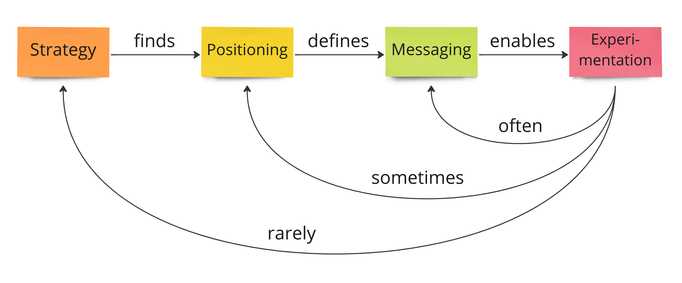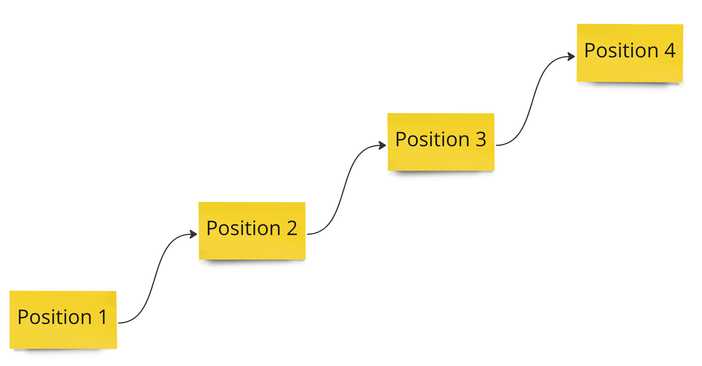SPME: A marketing habit for solopreneurs who have other things to do besides marketing
How to do marketing even when you don't love it, making it easy for yourself.
Published:

Marketing when you don't love it
As a solopreneur, you wear many hats, one at a time. You're a developer, creator or maker. You're a marketer, a business person, even your own CEO.
Now what happens if you don't love marketing?
- You procrastinate.
- Fewer people will know what you offer.
- You get less business, less revenue.
Been there, done that. I made that mistake myself, repeatedly. 😳
Then I asked myself: "What must I do to create a situation that keeps me doing my marketing, regularly and effectively?"
After that question, the answer was obvious: I need to set up a strong structure that guides me and makes me build a habit.
The SPME habit
SPME is the acronym for the habit I created.
3 initial steps, used sparingly. 1 recurring step, used liberally.
Here they are:
- Strategy
- Positioning
- Messaging
- Experimentation
Steps 1-3 prepare your "launchpad". You don't do them that often. Do them once when you start your marketing, and revise them later when the experiments show results (be they positive or negative).
Step 4 is the frequent step that you do daily, weekly, or bi-weekly, depending on the size of your experiments. More on this below.
Let's take the steps one by one now:
Strategy
April Dunford inspired me to think this way about marketing strategy.
Strategy defines:
- The way towards your first position.
- The way from position to next position.
- Like a staircase, up and to the right.

Let me explain.
A position is a context, an environment. You want your product to appear in that context, in a certain "light that's shining on it".
In that context, in that light, your product appears as a totally awesome and desirable solution to a particular set of problems.
Problems that your audience is experiencing. Or jobs that they need to get done.
Strategy is the art of finding out
- what those positions for your product could be
- and more importantly, what they should be.
Especially, what the first position should be, and into which other positions you want to place your product later.
Now, what exactly makes a position?
Let's see.
Positioning
A position is a context, an environment in which your product appears.
Your future customers put your product into such a mental position. This happens in their own minds.
If you don't do anything to position your product, customers do it without your help. The resulting position might not be the one you want for your product.
Example:
- If your product can store data and find it again, people might position your product as a database.
- Even when they know that your product can execute drill-down operations and generate sophisticated reports, they may not understand that you want to position it as a business intelligence tool instead of a mere database.
- They might even put your product away because they think it's only for tech people who can code.
If you want to position your product properly in the minds of your future customers, make these points absolutely clear:
- Product name and category
- Persona, i.e. type of person the product is made for
- Features that the product has
- Benefits caused by those features
- Jobs that can be done with the help of your product
- Qualities that the product feels like (fast, safe, easy to use, value for money, etc.)
These things together make a position. They put your product into a context and make it appear in a certain light.
Positioning is the basis for successful messaging.
Without proper positioning, you're in danger of writing all kinds of different messages that will confuse your audience.
With proper positioning, the next step becomes pretty easy: Defining the messages you want to send to the market.
Messaging
Messaging is about crafting successful messages that you can send to your audience.
Messages can be anything: Text, images, video, audio, whatever format you're comfortable with.
Messages should transport information and cause emotion.
The information your audience needs to develop emotions that lead them to buy your product.
The most successful form of messaging, I believe, is storytelling.
You can tell a simple story. Include these parts, for example:
- A painful situation your audience knows well
- The consequences of doing nothing (pain increases)
- The new idea: Your product as a solution for the problem!
- The benefits when they buy and use it
- The Super Mario person they will be afterwards
- The paradise they will live in, now they relieved the pain.
Each story you write tells your audience about your product, its features, the benefits, the jobs it can do, and the qualities it has.
Sounds familiar? Yes, you identified those things during positioning. You can now use them over and over again!
Time to do it. Start experimenting.
Experimentation
Messaging gave you a collection of stories, maybe mostly written down as conceptual stories, in text form.
Now is the time to send them to the world.
You do this by running experiments. An experiment consists of:
- a story you want to tell
- a channel by which to reach your audience
- a hypothesis of what will happen when they get the story
- the materials you need to tell the story (text, images, video, audio...)
- the recipe about how you process and combine those materials
- the tools you need to execute the recipe
You want to know my formula to build lots of experiments, daily, weekly? Here it is:
Story x Channel = Experiment.
Adapt the story to the channel. If you have 4 stories to tell (A, B, C and D) and 3 channels (e.g. landing page, email, Twitter), you have 12 combinations you can test and see which work and which fail.
Example for an experiment I did, end of December 2022:
- I told a story about a solopreneur who wants to setup their marketing.
- The storytelling format I chose was a free, step-by-step workbook PDF.
- The channels to my audience were: a landing page with an email signup form, the same email form displayed again after each blog post I have written, tweets on Twitter to send people to the landing page.
Classic setup. Took me four days to create all this and wire it together. Not clever but effective.
The email signup form makes people come to me who want to hear more stories.
Time for me to do more experiments with "channel = email" now, right? 😄
Build your own habit now
For you, it's time to get started.
Go one round through the SPME cycle:
Strategy: Choose a rough idea for a first position. "I want my product X to be awesome for people like Y who are in problematic situation Z."
Positioning: Make a sentence "My product X is the obviously awesome choice for people like Y who want to solve problem Z, because of feature F1, F2, F3 that render the benefits B1 and B2." Then, fill in the details.
Messaging: Write your first story about how Y overcomes Z using X, experiencing B1 and B2, becoming transformed into a better version of themselves.
Experimentation: Choose a few channels C1 and C2 (e.g. landing page and Twitter) and tell your new story to people like Y above.
Learn from what happens during your experiments, and go back to messaging, positioning, or even adjust your strategy if needed. (In the title picture, the curved back arrows show this).
To help you with the SPME habit, I build a special marketing software to support the SPME steps. It's called 2Quiet2Market.com, sign up for the Free Plan here. No credit card needed.
This software is made for solopreneurs who have other things to do besides marketing. 😄
Comments welcome: